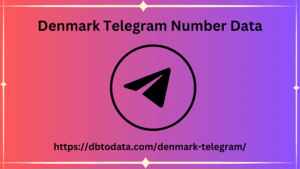Post by amirmukaddas on Mar 12, 2024 13:29:06 GMT 7
To remove content that has already been indexed from the Google , the best thing to do is often to remove the content and redirect the page to a similar or similar one in terms of type or topic covered. remove indexed content Strange as it may seem to you, the noindex attribute of the robots meta tag no longer serves to de- web pages, but at most causes them to disappear from the search engine SERPs. It may seem like a contradiction for an attribute called "NOINDEX", but in fact an already indexed page to which a noindex is attributed will continue to remain archived in the Google and if inserted into a scannable structure, will continue to be followed by Google's crawler using crawling resources. The Search Console URL Removal function only serves to temporarily hide one or more search results on your website from the SERPs.
I haven't used this feature in decades. In any case, removing content from the is not the only way to fix a website that misdirects page crawling. Very often it is a question of understanding how to act on bots to avoid the dispersion Denmark Telegram Number Data of Page rank and how to ensure that the bots themselves understand the difference between master and slave pages . Let's look at some cases: In the case of pages that are very similar to each other If you have two web pages optimized for the same search intentions , which by virtue of very similar contents risk cannibalizing each other making it difficult to assign relevance, putting one in noindex may not be the right way to help Google understand which of the two is the “master” page. Very often we think about putting content in noindex when, if anything, we would have to think about the web pages to be removed beforehand.

Spring will be here soon, what do you think about cleaning? However, if there remain reasons why it is essential to have pages on the website that are in fact useless because they are duplicated or completely useless compared to the user and search experience of your target audience, then you can choose to add to these a link with a canonical attribute which points towards the master page, as in the case of e-commerce sites where different URLs are generated for the same product sheet. It does not remove indexed content, but provides a clear indication of the relevance to be assigned. Google should decide for the best on its own, but you never know.
I haven't used this feature in decades. In any case, removing content from the is not the only way to fix a website that misdirects page crawling. Very often it is a question of understanding how to act on bots to avoid the dispersion Denmark Telegram Number Data of Page rank and how to ensure that the bots themselves understand the difference between master and slave pages . Let's look at some cases: In the case of pages that are very similar to each other If you have two web pages optimized for the same search intentions , which by virtue of very similar contents risk cannibalizing each other making it difficult to assign relevance, putting one in noindex may not be the right way to help Google understand which of the two is the “master” page. Very often we think about putting content in noindex when, if anything, we would have to think about the web pages to be removed beforehand.

Spring will be here soon, what do you think about cleaning? However, if there remain reasons why it is essential to have pages on the website that are in fact useless because they are duplicated or completely useless compared to the user and search experience of your target audience, then you can choose to add to these a link with a canonical attribute which points towards the master page, as in the case of e-commerce sites where different URLs are generated for the same product sheet. It does not remove indexed content, but provides a clear indication of the relevance to be assigned. Google should decide for the best on its own, but you never know.

